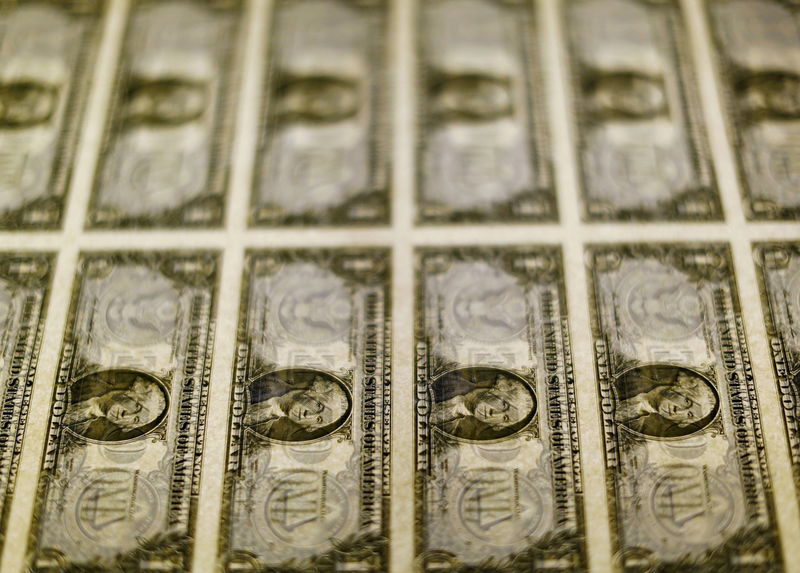By Ritvik Carvalho and Kevin Buckland
LONDON (Reuters) - The dollar headed for its best weekly gain in three months on Friday, lifted by growing confidence that the U.S. economic recovery will outpace its global peers.
The dollar index touched a two-month high in Asian trade amid signs of resilience in the labour market, with closely watched U.S. nonfarm payroll figures due later. It retreated in early London deals.
The dollar greenback also renewed highs versus the euro and yen during Asian trade, although both currencies recouped their losses in European trade.
"The U.S. economy is exceptionally strong relative to other countries, causing dollar short-covering," said Tohru Sasaki, J.P. Morgan's head of Japan market research in Tokyo, pointing to employment and manufacturing indicators as well as the pace of vaccinations.
The current bout of dollar strength could continue for "several weeks," he said, but the picture is murkier thereafter as Europe and Asia catch up with immunisations and the Federal Reserve's continued ultra-easy monetary policy caps a rise in long-term U.S. yields.
The dollar index touched 91.60 for the first time since Dec. 1, before drifting back lower to 91.375 by 0853 GMT.
The gauge has risen every day this week and is on track for a 1.1% weekly advance, the most since Nov. 1 and building on a 0.3% rise the previous week.
Graphics: Dollar on course for best week in 3 months - https://fingfx.thomsonreuters.com/gfx/mkt/jbyprnzqrpe/dollar.png
The dollar has been supported by a rise in longer-term U.S. Treasury yields, which came as traders positioned for massive fiscal spending.
Democrats in the U.S. Senate were poised for a marathon voting session aimed at overriding Republican opposition to President Joe Biden's $1.9 trillion COVID-19 relief proposal.
Strategists at ING said a softening correlation of the dollar with equity markets was noticeable, though it was hard to account for. They noted that while U.S. Treasury yields have picked up in the past week, they have been matched by an equivalent rise in German bunds.
"And certainly, the US vaccination roll-out looks far more impressive than that in Europe, though year-to-date gains in the US S&P 500 (+3.08%) only marginally outpace those of the Eurostoxx 50 (+2.52%)," they said.
"Heavy short dollar positioning probably plays a big role here and would again seem vulnerable were any part of today’s non-farm payrolls jobs data to be greeted positively."
Analysts and investors are weighing whether dollar strength this year is a temporary position adjustment after a 7% drop for the dollar index in 2020, or a longer-lasting shift away from dollar pessimism.
There are potentially a lot of dollar shorts to cover, particularly against the yen, where hedge funds had racked up their biggest bearish bets since 2016.
The dollar was 0.2% lower at 105.36 yen on Friday after earlier edging as high as 105.70 for the first time since Oct. 20.
The euro was 0.2% higher at $1.1981 after dipping to $1.1952, a level not seen since Dec. 1.
